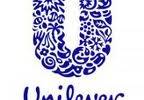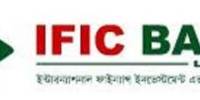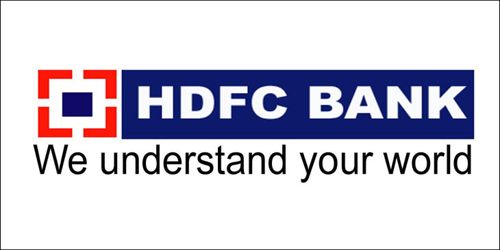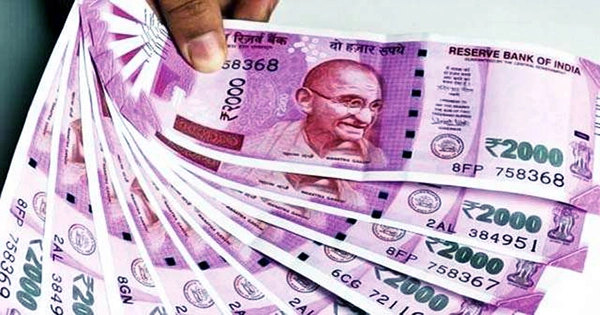Financial Performance Analysis between GPIT and Indian IT Companies
The current size of Bangladesh IT Industry and software/ITES industry in particular is still lot smaller with a total estimated IT industry size of US$ 120 Million (including export) compared to the overall economy and the number of population (over 150 million), but over the last few years the industry has grown considerably and is expected to grow at that rate for some time. It is estimated that during the last five years the average yearly growth rate of software & ITES industry has been over 40%. The growth has been driven by both good export trends in recent years as well as the growing IT automation demand in domestic market where local demand has been led by large automation projects by telecom, banking sector and export oriented garments/textile industry.
Currently there are over five hundred (500+) registered software and ITES companies in the country employing over 20,000 ICT professionals. Out of these companies, around 60% are mainly domestic market focused while 40% are mainly export focused and significant number of companies work for both local and export clients. Among these companies one of the leading IT firms in Bangladesh is Grameenphone IT Limited.
GPIT, a wholly owned subsidiary of Grameenphone Ltd. – the leading telecommunications operator in Bangladesh, was incorporated as a private limited company in January 2010 as a separate legal entity.
Company Profile
In today’s fast paced world, an education needs to be more than just book study. Career prospects need to hit the ground running and be well acclimatized to their chosen career path. An internship shows us the way of learning in a particular field offers the best training for people new to a career. Basically, internship is a system of on-the-job training for white-collar jobs, similar to an apprenticeship. Interns are usually university students.
Student internships provide opportunities for students to gain experience in their field, determine if they have an interest in a particular career, create a network of contacts, or gain credit.
In BRAC Business School it is mandatory for every business student to undergo through an internship program from any organization. Career Service Office of BRAC University helps the students to find a suitable internship program for themselves. CSO also helped me to find an internship program in one of the renowned IT company- Grameenphone IT Ltd.
Presently lot of organization need helps to solve technology related problem. That’s for the reason GPIT now collect 400 experienced worker and they providing there service 20 IT support center in the whole world. GPIT is providing services for some local organization and foreign organization. GPIT also wants to be a famous organization in the whole world.
A child of Grameenphone organization GPIT wants to provide worldwide technology service in Bangladesh. That’s for the reason our many locally organization and also other country organization getting this service in the easiest way. Then Bangladeshi people can get many Jobs.
GPIT is still working for our Garments Industry, mobile company and also some others company’s in our country. They are always given technology services. GPIT also want to give training 1200 high graduated people on our country.
History
The leading telecommunications operator Grameenphone Ltd. launched its first offshoot company. It is a wholly subsidiary of GP incorporated as a private limited company in January 2010 as a separate legal entity. From GP‟s operational backbone, GPIT build competitive business IT solutions and maintain their critical IT infrastructure, allowing Grameenphone to continue giving exceptional services to over 30 million subscribers nationwide.
GPIT is an international B2B company with a profit balance and stable corporate clienteles‟ prescription medications right from day one. IT has been established with an experience of more than a decade of excellence and effort to make people’s lives easier.
It has highly dedicated IT professionals that specialize in innovative, customized end to end solutions. It has targets to be a dominant player on the local market for enterprise grade IT software and managed solutions and recognized globally for quality mobile and enterprise software solutions as well as its support and maintenance.
GPIT already has created the first full activity-based, automated paperless workplace in Bangladesh and creating milestones and industry benchmarks in the way it operates. GPIT’s foremost ambition is to contribute to the growth of the local IT industry.
Currently GPIT provides complete managed services to GP. In addition to the telecom industry, the company wants to be successful in banking industry by providing best IT solutions. It has a target to develop the IT business that will improve way of life, increase productivity and efficiency that will take Bangladesh to a brighter future.
Product and service offerings
GPIT try to provide end-to-end solution for all IT need of the customers. They offer different IT solutions to their customers, which includes-
Solutions:
Mobile Solutions
Mobile solution endow with a range of service that helps the customer to gain competitive technology boundary which will help them showcase business capability and drive business growth. This solution gives the clients the chance to have the latest information at their fingertips.
Enterprise Solutions
Enterprise solutions are intuitive and cost-effective end-to-end solutions to transform client’s enterprise for outstanding results. These solutions ensure maximization of customer’s IT investment whilst utilizing their human resources effectively. And also provide them with comprehensive support for specialized requirements by working sincerely with their business partners.
Communication Solutions
For easier accessibility to information and enhance the organization’s cross-functional collaboration GPIT has developed communication solutions for the advancing organizations which includes unified communications (UC), PBX solutions, Multimedia and AV services.
Network Solutions
GPIT design and maintain entire network solutions that form the backbone of customer’s business according to the networking requirements to bridge the gaps between connectivity, security and accessibility.
Infrastructure Solutions
Infrastructure solutions include comprehensive range of services for building and maintaining technology assets of the customers.
Services:
System Integration
GPIT provide services for the infrastructure that will help customers to link infrastructure and data which can help expedite process, business intelligence and reporting objectives.
IT Consultancy
In IT consultancy they offer consultancy services in the areas of business strategy, disaster recovery, business continuity, operations, security and e-governance.
Support & Maintenance
Maintenances services are offered for technology and business processes. This includes maintenance of networks, infrastructure, communications and enterprise systems, ensure smooth performance.
Business Process Outsourcing
Under business process outsourcing GPIT provide economic solutions in carrying most cumbersome and daunting tasks of an organization which is compulsory but carrying high overhead.
Products:
Products offered by GPIT are:
- ERP (Enterprise Resource Planning)
- CRM (Customer Relationship Management)
- Core Banking
- Business Intelligence and Data Warehouse
- Call Center Solutions
- DR & Data Center
Vision, Mission & Value
Through their vision GPIT Ltd. hopes to achieve great milestones and with a culture of continuous improvement, they hope to succeed beyond measure.
Vision:
“Become the most reliable Bangladeshi IT company providing best value solutions both locally and globally.”
Mission:
“Help transform businesses through best IT solutions to reach new peaks in productivity and efficiency.”
Value:
GPIT shares four values with its mother company Grameenphone. The values are:
- Make it easy
- Be inspiring
- Be respectful
- Keep promises
Objective
Our objectives of the project is-
- To know about the IT industry.
- To get detailed information about GPIT.
- To gain knowledge about their market position and strategies.
- To learn about their current financial process and position
- To compare with other Asian giant IT companies and gets a clear picture of GPIT‟s current situation.
Bangladesh IT Market Scenario
IT Industry in Bangladesh is relatively small compared to Bangladesh’s total GDP nearing USD100 Billion. Twenty years ago the IT industry was predominantly a hardware vendors market with little or no value addition locally. The information technology industry in Bangladesh has gradually come of age and today accounts for USD300 million in annual revenues. It is still a tiny blip compared to a GDP nearing USD100 billion.
Total size of the IT industry now is USD 300 Mn as per BASIS. Today, Bangladesh has now more than 20,000 IT professionals engaged with over 500 software and ITES companies. Among them 100 companies currently export their products to more than 30 countries. BASIS is expecting the government will allocate 5 percent budget of annual development program for the IT sector. Software and ITES industries in Bangladesh have started growing rapidly. The average yearly growth rate is over 40% for recent five years.
A majority of the clients of Bangladeshi companies are exporting to NA, EU countries, East Asian countries and Japan. The core strengths of Bangladesh ICT sector is the young people.
However skilled IT resource crunch and brain drain are also threats for this industry. India, Philippines, China, Vietnam, Ukraine are the major competitors of Bangladesh IT companies. The cost of internet access is relatively high and currently there is no other diversified national connectivity option available.
The public sector is the largest domestic segment for IT Companies in Bangladesh. World Bank and Govt. is seriously taking initiatives towards public IT projects for instances project like. E-governance, office automation etc. Market size for Mobile Banking is the biggest (48 Mn) where as ERP and DC-DR are the second largest (18 Mn each).
Competitive Scenario of GPIT
Local competition
Local software development market is very fragmented with South tech being the largest with 200 people and the rest having less than 100 developers. That makes GPIT division already the largest software developer in Bangladesh. The competitors will have a certification & cost advantage on GPIT, but a significant disadvantage in quality perception and experience with enterprise maintenance.
Global competition
Globally a significant number of competitors can be found. The most notable are the “big four” Indian outsourcing companies TATA, Infosys, WIPRO and Satyam. In addition several of the consulting companies like IBM, Accenture etc are providing services to their customers through own Indian operations. The competition must be considered as significant; however GPIT will have a generic cost advantage especially in Bangladesh market. Other companies like Philippines, China, Vietnam, and Ukraine are also major competitors of Bangladesh IT companies.
Competition amongst direct competitors
For the mobile solutions the competition is reasonably week as there are plenty of opportunities. The same is, to some extent, true for the managed solutions on the local market, but here there are close to no competitors. For general outsourcing GPIT will be competing / be compared with companies like Wipro, TCS, and Infosys.
SWOT Analysis
Strengths
- Existing technical skills and experience
- Strong footprint in Telco domain
- Opportunity to leverage GP‟s corporate customer base
- 24&7 Customer Service nation wide
- Partnership with IT giants
- Internal resource capability to provide solution in multiple business areas with multiple skill sets
Opportunities
- Growing local demand for IT
- Digital Initiatives by government
- Global demand for low cost resource & IT Service
- Opportunity within Telenor Group & through Partner
- Need for a market leader in Bangladesh IT Industry
Weaknesses
- Inexperience in providing solutions to external customers as IT company & outsource project management
- Lack of solution competency in domains other than Telco
- Development & process standardization readiness
- Lack of customer reference
Threats
- Lack of supply for skilled IT resources in Market
- Global player in local market (Wipro, Samsung)
- Potential competition from local companies
- Regulatory changes & political instability
- Foreign currency restrictions
SWOT Matrix
GPIT Strategy to tackle threats and achieve opportunities:
- Competency development based on the upcoming demands & trends
- Collaboration with local companies and competitors for industry development
- Collaboration with universities and training institutions for skilled & ready workforce
- Strong involvement with Government, BASIS, BGMEA to utilize it in modifying industry policy & regulation for its favor
GPIT Strategy to utilize strengths and overcome weakness:
- Quick utilization of low hanging fruits where both demands and competency match
- Proactive marketing & aggressive sales visit to the target verticals for local market & Telco domain for global market
- Identification & implementation of cost & efficiency project within organization
- Training & capability development for new team with increasing efficiency
- Revise benefit policy in alignment with industry average
- Immediate concentrate on the being full complaint with standardization in order to bring efficiency in process.
Financial Analysis and Comparative Study
Financial analysis refers to an assessment of the viability, stability and profitability of a business. Typically, financial analysis is used to analyze whether an entity is stable, solvent, liquid, or profitable enough to be invested in. It is prepared using ratios that make use of information taken from financial statements financial reports like income statement, balance sheet, and cash flow statement. This analysis is presented to top management as one of their bases in making business decisions.
Profitability Ratio Analysis
With the help of financial ratios we can determine a firm’s strength to generate revenue compared to the costs incurred in the process. Higher profitability ratio would indicate that firm has the ability to generate more revenue compared to the incurred costs and vice versa. In this report we will focus on the following profitability ratios:
- Profit margin
- Return on assets
- Return on equity
Profit margin
The equation that needs to calculate profit margin is:
Profit margin = (Net Income/ Revenue)
This ratio helps us to compare a firm’s net profit with its revenue generated over a particular period of time. For example, a particular firm’s net profit margin turns out to be 8.9%, then it would mean that after considering all the expenses and revenues the company has been able to yield tk8.9 worth of net profit out of every tk100 worth of revenue. GPIT has a profit margin of 19.65%, which indicates that after considering all the expenses and revenues the company has been able to yield TK19.65 worth of net profit out of every TK100 worth of revenue.
Return on Assets
The equation that needs to calculate return on assets is:
Return on Assets = (Net income /Total assets)
Return on assets or ROA gives us an idea about how the firm has utilized its assets to generate its net income. Higher value would indicate better utilization of assets. For example ROA value of 25% would mean that for every TK100 worth of assets revenue generated by the firm is TK25. GPIT has a ROA of 15.31% which means that every TK100 worth revenue generated by the firm is TK15.31.
Return on Equity
The equation that needs to calculate return on equity is:
Return on equity = (Net income / shareholders‟ equity)
This ratio helps us to understand how much revenue the company has generated utilizing the money invested by its shareholders. Again higher value would mean better utilization of shareholders invested money and vice versa.
For example 35% ROE would mean that the firm has generated TK35 revenue utilizing every TK100 worth of shareholders‟ investment. And according to the calculation GPIT has a ROE of 62.72%, which means that it has generated TK62.72 revenue utilizing every TK100 worth of shareholders‟ investment.
Assets Utilization Ratio Analysis
These ratios are useful to develop an idea about management’s efficiency in running a particular organization. It helps us to determine how well the management is using its assets and liabilities to generate revenue or to operate various functions of the organization. Following ratios will be used in this regard:
- Inventory Turnover Ratio
- Fixed Assets Turnover Ratio
- Total Assets Turnover Ratio
Inventory Turnover
The equation that needs to calculate inventory turnover ratio is:
Inventory turnover ratio = (Revenue / Inventory)
This ratio helps us to determine how well the company is using its inventory to generate its revenue. For example inventory turnover ratio of a particular company is 15 then it would mean that the company is earning TK15 worth of revenue for every TK1 worth of inventory. According to the calculation GPIT has a turnover of 6.20 times, which means it is earning TK6.20 worth of revenue for every TK1 worth of inventory.
Fixed Assets Turnover Ratio
The equation that needs to calculate fixed assets turnover ratio is:
Fixed assets turnover ratio = (Revenue / Fixed assets)
With the help of fixed assets turnover ratio we can have a understanding about management’s efficiency in utilizing the company’s fixed to generate revenue over a particular period of time. For example, a company’s fixed assets turnover ratio is 2.3 which would indicate that the company has the ability to generate TK2.3 worth of revenue by using every TK1 worth or fixed assets. According to the calculation GPIT has a fixed assets turnover of 3.63 times, which means has the ability to generate TK3.63 worth of revenue by using every TK1 worth of fixed assets.
Total Assets Ratio
The equation that needs to calculate total assets ratio is:
Total assets turnover ratio = (Revenue / Total assets)
Like the previous cases by using this we can develop an idea about how well the company is utilizing its total assets to generate revenue. According to the calculation GPIT has a total assets turnover of 0.78 times, which means has the ability to generate TK0.78 worth of revenue by using every TK1 worth of total assets.
Liquidity Ratio Analysis
Liquidity ratio can be used to determine a company’s ability to pay off its short term debt obligations. So, naturally higher liquidity ratio would indicate firm‟s strength to meet up its short term obligations. However, too high value of liquidity ratio might advocate a different sort of weakness of the company. If the liquidity ratio of a particular company is too high then it would mean that it hasn’t been efficient in utilizing its short term assets and a greater portion of its short term assets has remained idle and unused. In this segment we will use the following liquidity ratios to compare the performance of GPIT with some other foreign firms:
- Current Ratio
- Quick Ratio
Current Ratio
The equation that needs to calculate current ratio is:
Current ratio = (Current Assets / Current Liabilities)
Normally, if the value of the current ratio is more than 1 then it would mean that the company can pay off its current obligations utilizing its current assets which would in turn indicate the firm’s solvency. And here the current ration of GPIT is 1.04, so it means it has the ability to pay off the current obligation.
Quick Ratio
Quick ratio = [(Current Assets – Inventory) / Current Liabilities]
Quick ratio is another measure of firm’s solvency. It measures whether firm can meet up it current liabilities without liquidating its inventories or not. Quick ratio value of more than 1 would mean that firm can pay off its current obligations without liquidating its inventories and values lower that 1 would mean firms insolvency in this regard. Here GPIT has a quick ratio of 0.87, which is lower than 1. This means it is not that much solvent to pay off its current debts.
Debt Utilization Ratio Analysis
Debt utilization ratios are used to evaluate the firm’s debt position. It allows the analyst to measure the prudence of the debt management policies of the firm. In this segment we will use the following ratios to compare the performance of GPIT with some other foreign firms:
- Total Debt Ratio
- Financial Charges Coverage
- Debt/Equity Ratio
Total Debt Ratio
The equation that needs to calculate total debt ratio is:
Total Debt Ration = (Total Debt/ Total Assets)
Debt Ratio is a financial ratio that indicates the percentage of a company’s assets that are provided via debt. It is the ratio of total debt which is the sum of current liabilities and long-term liabilities and total assets which is the sum of current assets, fixed assets, and other assets such as ‘goodwill’. The higher the ratio, the greater risk will be associated with the firm’s operation. In addition, high debt to assets ratio may indicate low borrowing capacity of a firm, which in turn will lower the firm’s financial flexibility. GPIT has a ratio of 75.59% which indicates that it has a lower borrowing capacity.
Financial Charges Coverage
The equation that needs to calculate financial charges coverage is:
Financial Charges Coverage = (Profit before interest and tax / Fixed Charges)
This can be used to determine how easily a company can pay fixed charges on outstanding debt. The lower the ratio, the more the company is burdened by debt expense. This ratio below 1 indicates the company is not generating sufficient revenues to satisfy interest expenses. GPIT has a fixed charges coverage of 191.50 times which indicates that company is not burdened by debt.
Debt/Equity Ratio
The equation that needs to calculate debt/ equity ratio is:
Debt equity ratio = (Total Liabilities / Shareholders Equity)
Debt equity ratio can be used to measure a firm’s solvency. It indicates that debt equity ratio value of more than 1 would indicate firm’s ability to pay off all its debt utilizing its shareholders equity. It also helps us to understand company’s method of financing its overall operation. GPIT has a ratio of 3.10 which indicates that it has the ability to pay off Debt using its equity.
Conclusion
There have some interesting findings in the report, one of them is the fact that GPIT‟s profitability ratios like gross profit margin, ROA and especially ROE have been quite higher like other firms but their efficiency ratios like inventory turnover ratio, fixed asset turnover ratio have been quite low. This might seem a bit contradictory at first look but in fact it isn’t so. A closer look at the profitability ratios will give an idea that all the profitability ratios of GPIT top the list except ROA. But ROE remained high due to heavy reliance on liabilities which created a financial leverage and did boost up ROE figure. So based on these findings a conclusion can be drawn that GPIT hasn’t been efficient in managing their assets to generate revenue in the last year but still their profitability ratios were high because they have been able to manage their expenses in an efficient manner. These activities might have caused such variations in profitability ratios and management efficiency ratios.
There are some more interesting findings, like- even though GPIT showed high reliance on liabilities to finance their assets they had absolutely no long term debt in the year 2010. So, high percentage of their assets have financed through current liabilities. There have also been some noticeable findings of Satyam and Wipro regarding their management efficiency ratios.
Inventory turnover ratio of Wipro has a very high figure but fixed assets turnover ratio and total assets turnover ratio are really poor. This might have resulted due to the fact that inventory comprises very small portion of Wipro’s total assets. Satyam’s case is just the opposite, their inventory turnover ratio is poor but fixed assets turnover ratio is very high. So their fixed assets might comprise a small portion of their total assets compared to inventories.
Satyam’s profitability ratios have been consistently low compared to other firms and their ROE wasn’t promising even though they had a high long term debt equity ratio compared to other IT firms. The reason is that even though Satyam’s long term debt ratio was much higher their debt equity ratio wasn’t so, which means that they didn’t rely heavily on liabilities to finance their assets. Long term liability comprised a high portion of the total liability but liability itself wasn’t used extensively to finance their assets. That’s why ROE remained low even though long term debt equity was high. So, based on the discussion it can be conclude that GPIT‟s performance in the year 2010 was bad compared to those other IT firms and especially if we consider the fact that GPIT is a new IT firm in the market. In the 2010 GPIT managed their expenses in a pretty efficient as it has been shown in this report but their asset management strategies haven’t been that much efficient. So if the firm focuses on improving those areas where their inefficiencies lie and keep up the good work they did in 2010, then it may be safe to say that GPIT has a sound future ahead and might well be one of leaders in the IT market of South-East Asia.
















